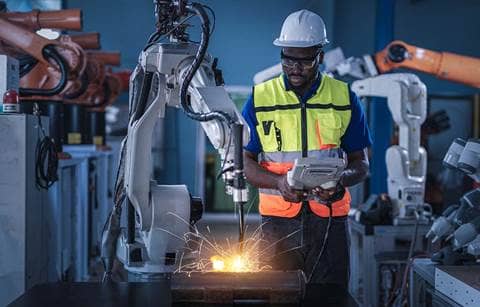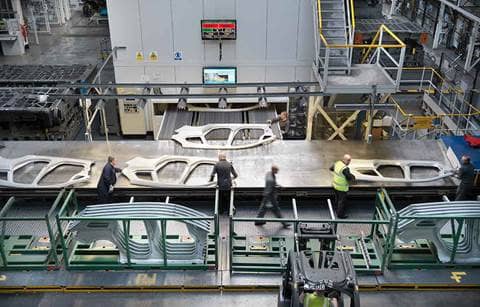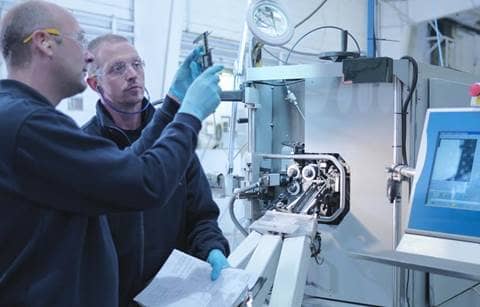The Inflation Reduction Act of 2022 (IRA) added Section 45X, the Advanced Manufacturing Production Credit, to the Internal Revenue Code (IRC). The 45X tax credit supports U.S.-based production of eligible components within the supply chain of solar and wind energy, batteries, inverters, and critical minerals and it is effective for components produced and sold after Dec. 31, 2022. That effective date means qualifying businesses will need to document and support claims for the credit on the 2023 income tax returns that they will be filing this year.
The U.S. Department of the Treasury (Treasury) and the IRS have recently released proposed regulations that attempt to clarify several of the terms used in the statute and some of the steps that taxpayers can take to document and support their claims for the credit. The guidance addresses various questions that had been left somewhat open-ended by the text of the law, but many important terms and concepts are still subject to taxpayer interpretation for the time being. Here are five key takeaways from the recent proposals.
45X tax credit regulations unclear on “substantial transformation;” non-U.S. materials can be used
To qualify for the credit, each eligible component must be “produced by the taxpayer” and “sold by the taxpayer to an unrelated person.” The proposed regulations specify that a component will be considered produced by the taxpayer when it conducts a process “that substantially transforms constituent elements, materials, or subcomponents into a complete and distinct eligible component … ” The rules go on to note that partial transformation, mere assembly, or superficial modification won’t be considered substantial transformation. Treasury didn’t elaborate further on what would constitute “substantial transformation.” Documentation will be key for supporting any claim in a situation where such a critical term is not clearly defined. That can include but is not limited to process documents, photographs of the materials, and the processes by which they are transformed into eligible components in order to clearly demonstrate the extent of the transformation.
Examples in the proposed guidance distinguish between two similar situations where three taxpayers each produce one of three sections of a wind tower. If three separate taxpayers each produce one section of the wind tower, none of the taxpayers has produced an eligible component. However, if the three taxpayers form a partnership and that business produces all three components comprising the complete wind tower, it has created an eligible component and it qualifies for the credit.
Another issue discussed in the proposed regulations is whether the materials, elements, or subcomponents that are substantially transformed into an eligible component are subject to a domestic production restriction that would require they be produced in the United States. Taxpayers can use non-U.S. materials, elements, or subcomponents and still qualify for the credit as long as the substantial transformation of those material, elements, or subcomponents into eligible components occurs within the United States.
IRS will not challenge contract manufacturing arrangements that specify a “producer"
The proposed regulations state that in situations where a taxpayer produces eligible components using contract manufacturing arrangements with other parties, the IRS won’t challenge an agreement among the parties that designates which taxpayer will claim the credit. The agreement must include certain items, including a penalty of perjury statement. In short, the IRS is stating that it will not challenge a claim of the credit by one taxpayer that relied on contracts with other businesses to substantially transform materials into eligible components. The main concern around tax administration is that multiple taxpayers aren’t claiming a credit for the same eligible components.
This aspect of the credit will likely require careful review and possibly modification of contracts that manufacturers of these components use to manage their supply chains. Existing agreements may not include the specific details about which party is eligible to claim the credit.
Related party election rules
The proposed rules allow flexibility for related taxpayers to claim a credit before a final sale is made to an unrelated party in some circumstances. This provision can help related businesses where one taxpayer produces an eligible component like battery cells and then sells it to a related party that then incorporates the battery cells to produce battery modules. Without this election, neither business would be eligible to claim a credit for the components until a final sale of the battery modules is made to an unrelated third party. The guidance allows the parties to make an annual election to treat those sales of battery cells as if they were made to a third party, which gives the first business the opportunity to claim the credit sooner than it would absent such election.
Anti-abuse provisions guard against fraud
The guidance takes into account the government’s goal of creating a robust supply chain of clean energy components produced within the United States. In some cases, the credit available to a taxpayer may significantly offset the cost of producing an eligible component. That makes this area of the tax law attractive to some who might look to profit from the credits without adding eligible components to the supply chain. The third-party sale requirement helps to police that aspect of potential fraud.
Because related party transactions have the potential to remove the check on fraud provided by the third-party marketplace, the rules come with some extra limitations. If a related party transaction results in an “improper use” of an otherwise eligible component, such as discarding or destroying the component without putting it to a productive use, that improper use will result in a revocation of the related party election and an inability of the first related party in the chain to claim a credit before a third-party sale.
Documentation of eligible components for the 45X tax credit
The proposed guidance lists specific types of documentation that will be expected to support different types of eligible components:
- Solar components will need design documentation that supports capacity and wattage.
- Structural fasteners and torque tubes will require a bill of sale, specification sheet, or other similar documentation.
- Wind components will need support for the turbine model and total rated capacity of the completed turbine in technical documentation associated with the sale of the component.
- Inverters should be supported by documentation of rated output and capacity (Specification sheet), bill of sale, or other similar paperwork.
- Batteries don’t currently have a substantiation clause under the qualifying battery component.
Ongoing process for advanced manufacturing production guidance
These proposed regulations are the first step in providing guidance on a potentially valuable tax credit that many taxpayers will be claiming on their 2023 tax returns. There will be a comment period and hearings, and the regulations will likely be modified before they are released in final form.
All tax positions relating to the 45X credit will require documentation about component eligibility and quantification of production. However, of all the items that have been discussed to date, it seems that the most critical caveat will be to document and support any processes that purport to “substantially transform” raw materials and other inputs into “eligible components” when claiming the credit on 2023 returns. After that, taxpayers should review any contract manufacturing arrangements they have with other businesses to produce the types of components that qualify for the credit.
To learn more about how these proposed regulations may affect your business’s claims for the advanced manufacturing production credit on 2023 tax returns and beyond, contact your tax advisor.





